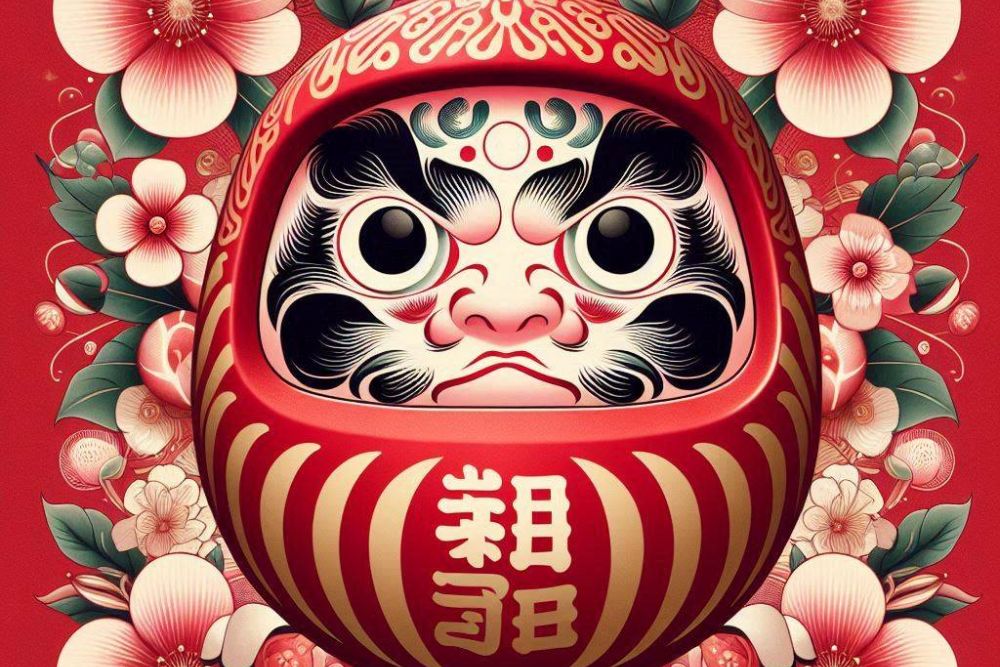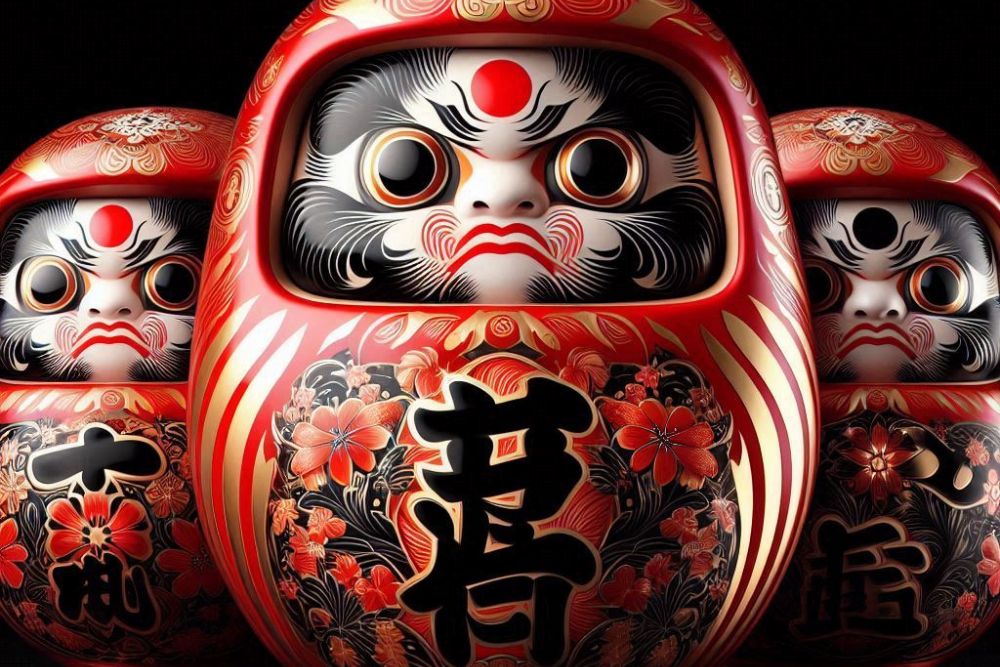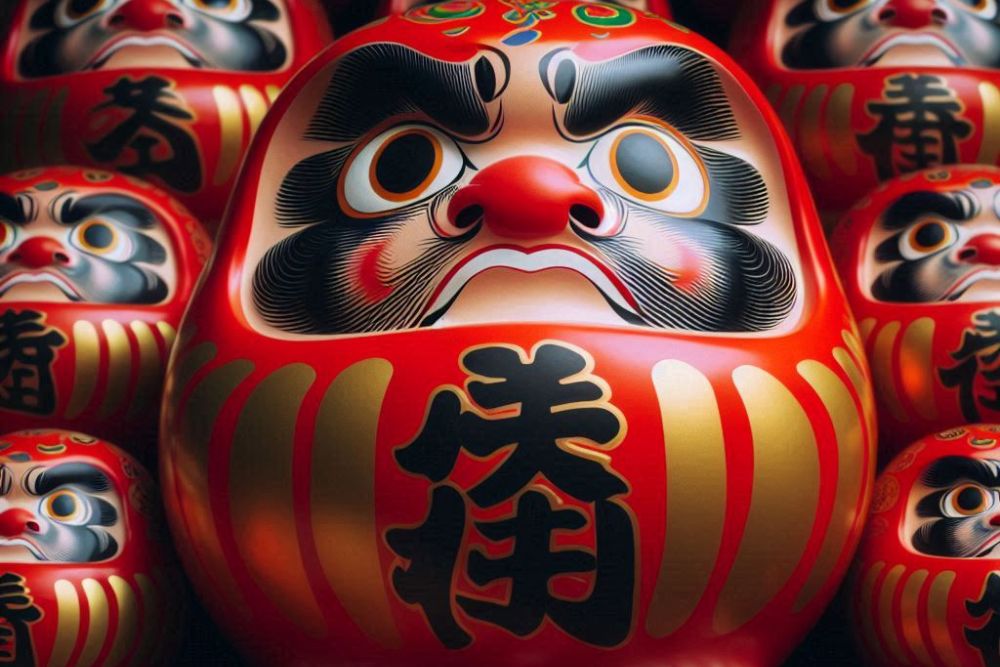Explore the hidden power of “Gaman,” the unspoken Japanese concept of endurance, and its surprising relevance in our fast-paced world.
My journey into Japanese culture began with a fascination for their minimalist and mindful approach to life, particularly their remarkable spirit of resilience evident in historical events. As I delved deeper, I encountered the intriguing concept of Gaman, which has sparked much contemplation within me. Among the whirlwinds of modern life, I can’t help but wonder – what hidden power lies within this unspoken endurance, and how might it resonate in our ever-changing world?
Highlights
- Gaman is a key Japanese virtue that emphasizes patient, dignified endurance of hardship for the sake of personal growth and social harmony. Though unique in its expression, the concept resonates deeply with global themes of Stoicism, grit, and religious perseverance through life’s challenges.
- With its essence deeply woven from Buddhist acceptance, samurai fortitude, and evolving social expectations, the philosophy of Gaman has – over time – become a core Japanese quality and has contributed significantly to the country’s resilience and collective spirit.
- Adopting a Gaman mindset provides a way to cultivate inner strength, foster personal growth, and strengthen communities through dignified endurance; as such, it is a powerful tool for navigating life’s challenges and pursuing dreams.
- The philosophy’s potential for both resilience and pitfalls necessitates a balanced approach that prioritizes personal well-being and open communication over silent suffering.
- Practicing Gaman involves shifting mindset, managing emotions, setting goals, finding meaning, and actively engaging in societal issues with a long-term perspective and a sense of community.
What is Gaman?
Gaman (Hiragana: がまん; Kanji: 我慢, pronounced “gah-mahn”) is a Japanese concept that refers to the act of enduring hardship with patience, perseverance, and dignity. In English, it is often translated as tolerance, self-restraint, or self-control (though not quite the same). There’s a related term “Gamandzuyoi” (我慢強い), which means “having a high capacity for stoic endurance.”
Here’s a breakdown of the concept:
- Endurance: The ability to bear up under difficult circumstances.
- Patience: This involves forbearance (忍耐, Nintai) and avoiding complaints.
- Dignity: Maintaining composure (落ち着き, Ochitsuki) and fulfilling one’s duty even in difficult situations.
Gaman is considered an important virtue in Japanese culture – an admirable quality that plays a key role in fostering self-discipline, resilience, humility, and personal responsibility. It is often tied to the Japanese’s tendency to value social harmony (和, wa) and refrain from expressing negativity to avoid disruption.
Endure the unendurable and suffer what is not sufferable.
Emperor Showa (Hirohito) in his surrender speech – before the occupation of the Allied forces in Japan

Daruma – A common Gaman symbol (due to its ability to naturally turn upright back when tipped over)
Examples of Gaman
Gaman is typically instilled in children from a young age and is seen in how Japanese behave in everyday situations, such as patiently waiting in line or stoically dealing with difficulties. Below are a few examples of how this trait may be observed in daily life:
- Personal challenges: Studying for a difficult exam all night (徹夜勉強, Tetsuyabenkyou) requires Gaman to push through tiredness.
- Work ethic: A salaryman working long hours despite feeling burnt out, for the sake of his family or company.
- Emotional control: Hiding your frustration (イライラを隠す, Iraira wo Kakusu) during a disagreement to maintain peace.
- Physical discomfort: Continuing a physically demanding job despite pain (我慢して仕事をする, Gaman shite Shigoto wo Suru).
- Relationships: Your significant other is stressed or upset, so you choose to listen patiently and offer support without complaining about your own problems.
- Customer service: A store clerk might deal with a rude customer politely and professionally, even if it’s frustrating.
- Public transportation: People on a crowded train endure close quarters and inconveniences silently.
- Difficulties: You experience a personal loss but maintain composure and carry on with your daily life.
- Facing tragedy: The stoic response of survivors from a disaster (e.g. the 2011 Tohoku earthquake and tsunami), who focus on rebuilding rather than dwelling on personal losses.
Cultural Comparisons: Gaman vs Similar Concepts
While seemingly unique, the concept of Gaman shares threads with various philosophical and spiritual traditions across the world.
- Stoicism & resilience
Similar to Stoicism’s emphasis on reason and self-control in the face of adversity, Gaman highlights the importance of inner strength and emotional regulation. Both philosophies acknowledge the limitations of human control and encourage focusing on what can be influenced, so as to foster inner peace amidst external challenges.
However, one thing that sets Gaman apart from Stoicism is that it goes beyond mere suppression. Specifically, it encompasses the ability to maintain inner composure – while acknowledging and processing the emotional impact of challenges. As such, one is still capable of genuine emotional expression within the framework of dignified perseverance.
- Grit & perseverance
Gaman shares a kinship with the Western psychological concept of “grit” in that both stress the importance of determination in pursuing long-term goals (no matter the setbacks). This unwavering commitment is what enables individuals to navigate challenging circumstances with sustained effort.
- Religious philosophies
Several religious traditions offer profound parallels to Gaman. In Christianity, the notion of “suffering in silence” echoes the quiet endurance and trust in a higher power that characterizes Gaman. Similarly, Islamic concepts like “Taqwa” (piety) and “Sabr” (patience) promote inner strength, acceptance of divine will, and perseverance through life’s trials. On the other hand, Hinduism’s “Tapas,” which emphasizes self-discipline and austerity for spiritual growth, shares a similar focus on enduring physical and mental hardships with purpose.

Origins & Development of Gaman
Gaman is one of those special words in Japanese that doesn’t have an English equivalent. It is the art of perseverance through tough times. It is a part of duty. A sign of growing up. Maturity.
Emiko Jean
Gaman’s roots lie in a rich tapestry woven from ancient Buddhist philosophy, the warrior ethos of the samurai, and the unique social fabric of Japanese culture.
- Buddhism
Zen Buddhism, with its emphasis on mindfulness and inner strength, provided fertile ground for the concept of accepting suffering and finding solace in detachment (手放し – Tebanashi). This spiritual foundation instilled the idea of looking beyond immediate discomfort toward a broader perspective on life’s journey. As such, acts such as talking too much or outwardly expressing negativity should be discouraged – especially if one would like to attain true enlightenment.
By cultivating present-moment awareness and emotional detachment, one becomes better equipped to confront challenges with equanimity. This resonates deeply with the Wabi-sabi aesthetic (わび・さび – 侘寂, which is about finding beauty in imperfection and impermanence), and Oubaitori (桜梅桃李 – which teaches the importance of embracing individual differences and letting go of unhealthy self-comparisons).
- Bushido’s fortitude
The Bushido code (武士道 – Way of the Warriors), created to guide the samurai class, further solidified Gaman’s prominence. Revered for their unwavering discipline, samurai embodied the ideal of facing adversity with unwavering resolve, composure, and honor. This warrior ethos has significantly shaped the cultural understanding of Gaman and its enduring value within Japanese identity.
- World War II
In the book “The Art of Gaman“, author Delphine Hirasuna showcases the resilience of Japanese Americans through photos of art created in WWII internment camps. Despite facing isolation and harsh conditions after being quarantined by the US government (following the Pearl Harbor bombing in December 1941), the 112,700 internees found solace and community in artistic expression. From shell butterflies to intricately carved birds, their artworks stand as powerful testaments to human creativity and the enduring spirit of Gaman.
Following the atomic bombings, the people of Hiroshima and Nagasaki demonstrated extraordinary Gaman, rebuilding their cities from the ashes with unwavering determination.
- Post-war: From self to society
While initially rooted in Buddhist teachings focused on individual self-improvement, Gaman has gradually evolved into a social mechanism for navigating group dynamics. This shift became particularly evident during Japan’s post-war economic boom, where dedication to work and national rebuilding took precedence. Gaman, in this context, encouraged people to prioritize collective goals and endure personal sacrifices for the greater good.
Gaman’s enduring legacy as a cultural ideal speaks volumes about its continued relevance in Japanese society. It serves as a source of strength and resilience, allowing individuals and communities to weather life’s storms with quiet dignity and unwavering spirit. The concept extends beyond mere individual perseverance – in fact, according to criminologist Nobuo Komiya, emphasis on Gaman, with its inherent social expectations and self-monitoring, may be attributed to Japan’s remarkably low crime rates, as well as the citizens’ sense of collective responsibility and social harmony.
Culture of Gaman – Ken Mogi
Gaman: The Spirit Embodied in Japanese’ Daily Life
Fall down seven times, stand up eight. (Nana korobi ya oki – 七転び八起き)
Japanese Proverbs
Gaman’s essence isn’t confined to theoretical discussions; it’s vividly displayed in the everyday lives and collective responses of the Japanese people.
- Facing calamity with dignity
When natural disasters like earthquakes, tsunamis, and typhoons strike, communities unite, supporting each other in rebuilding while maintaining composure amidst the chaos. This unwavering resilience in the face of adversity showcases Gaman not just as an individual virtue – but as a powerful social glue that binds people together during challenging times.
- Personal trials & tribulations
From the loss of loved ones to the challenges of illness or financial hardship, Gaman empowers people to move forward with quiet strength and maintain their dignity and optimism – even when faced with seemingly insurmountable obstacles.
- Quiet strength in crowded spaces
Even in the most mundane aspects of daily life, Gaman’s influence is evident. Take the notoriously crowded Tokyo subway system, where millions of commuters navigate daily. Despite the potential for stress and frustration, a sense of calm and order prevails. Passengers patiently wait, shuffle into tight formations, and endure the physical discomfort with quiet acceptance.
- From short-term to long-term
Gaman’s application extends beyond specific situations. It can manifest in short-term instances like ignoring a noisy passenger or an elderly queue-jumper – or long-term commitments like enduring an unpleasant job or tolerating a difficult colleague.
Gaman (我慢) provides the inner fortitude and resilience needed to fuel the active pursuit of overcoming adversities through dedicated efforts (also referred to as “Ganbaru” – 頑張る).

Why Gaman? Benefits of Adopting the Philosophy
It’s important to remember Gaman benefits the individual. It means they don’t get fired from work or can gain from continuing relations with people around them.
Nobuo Komiya
- Forging inner strength
At its core, Gaman teaches the art of navigating life’s inevitable challenges. By accepting what cannot be changed and focusing on finding inner strength, one may develop a robust mental fortitude that fosters a more positive outlook on life’s difficulties, thereby reducing the impact of stress and anxiety.
- From adversity to growth
Gaman goes beyond mere endurance. It encourages us to find meaning and purpose within challenges, using them as catalysts for personal transformation. This active engagement with adversity enables us to gain a deeper understanding (and acceptance) of life’s complexities, which contributes to emotional maturity and lays the stepping stones on the path to self-discovery and personal growth.
- Community & cohesion
Gaman’s impact extends beyond the individual; it also strengthens the fabric of the community by prompting us to act not just for personal gain – but for the common good. This shared ethos of enduring adversity with grace fosters a sense of unity and compassion, as well as facilitates a supportive environment where people come together to help each other in times of need.
There is a philosophical understanding in Japan that life inevitability includes disasters and triumphs that are bigger than the individual in the circle of life, which is a particularly relevant and useful mindset in the current period we find ourselves globally.
Dr. Joshua W. Walker
Read more: Memento Mori – A Reminder of Life’s Impermanence & How to Live the Right Way
The Importance of Gaman in Realizing Your Dreams
Gaman is to help endure the darkest of times.
Gary Mukai
In the pursuit of dreams, Gaman acts as a powerful force that fuels our journey. It allows us to navigate setbacks, overcome obstacles, and stay committed to our long-term goals.
- Embraces difficulty: The path to achieving dreams is rarely smooth. Gaman encourages us to acknowledge the truth, view challenges as opportunities for growth and learning, not insurmountable roadblocks, and remain committed to our visions.
- Inner strength: The spirit of Gaman cultivates inner fortitude and mental resilience – it prompts us to tap into our inner reserves of strength and determination to push through difficult times.
- Adaptability: Gaman fosters the ability to adjust your approach as needed, learning from mistakes and embracing new strategies when faced with unexpected challenges.
- Focus and discipline: Thanks to the focused action and disciplined effort inherent within the philosophy’s principles, practitioners become better equipped to stay on track, maintain momentum, and resist distractions that could derail their progress.
- Long-term perspective: In practicing Gaman, we are constantly reminded that success is often a marathon, not a sprint, and therefore requires sustained effort over time. As such, short-term difficulties should not de-motivate or distract us from keeping an eye on the bigger picture.
Gaman is not about blind stubbornness, but about mindful persistence. It’s about choosing your battles wisely and focusing your energy on what truly matters for achieving your dreams.

Read more: Choices in Life – Moving Beyond Right & Wrong Decisions
Principles of Gaman
- Self-control & restraint
Gaman emphasizes managing your emotions, especially negative ones like anger or frustration, in the face of adversity. It’s not about suppressing feelings entirely, but channeling them constructively rather than letting them impede progress. On the other hand, we are encouraged to prioritize long-term goals over immediate desires. Instant gratification should be forgone – and necessary sacrifices should be made for the sake of achieving a bigger vision.
Example: A young athlete training for a marathon might experience pain and fatigue during practice. Gaman would prompt them to control the urge to quit and push through the discomfort, knowing the long-term reward of reaching their fitness goals.
- Acceptance & focus
Challenges and setbacks are inevitable; hence, we need to confront them head-on without succumbing to despair. At the same time, we are also called to be patient and maintain focus on the task at hand – rather than dwelling on past failures or future anxieties.
Example: An entrepreneur facing financial setbacks in their business could practice Gaman by accepting the current situation and focusing their efforts on developing new strategies and adapting their approach, rather than getting bogged down by negativity.
- Inner strength & discipline
Gaman practitioners are encouraged to cultivate inner resilience and the ability to tap into their reserves of strength and determination. It’s about believing in one’s own capacity to overcome obstacles, not giving up easily, and consistently taking disciplined action toward one’s goals.
Example: An artist working on a complex project might encounter creative blocks or technical difficulties. Gaman would push them to keep practicing, experimenting with different approaches, and persisting through challenges until they achieve their artistic vision.

Japanese principles of Gaman
Considerations When Practicing Gaman: Finding the Right Balance
It’s the representative characteristic of Japanese people, but it has good and bad points.
Nobuo Komiya
While Gaman is often lauded as a defining characteristic of Japanese culture, it’s crucial to recognize its multifaceted nature. Like any powerful tool, the concept requires mindful application to reap its full benefits and avoid potential pitfalls.
- Potential double-edged sword
Gaman’s ability to foster resilience and social cohesion is undeniable. However, misinterpreting or overemphasizing it may lead to unhealthy consequences. Suppressing emotions to an extreme or blindly adhering to authority, for instance, can hinder personal well-being and stifle genuine connection.
- Finding the equilibrium
The key lies in striking a balance between Gaman’s strengths and its limitations. It’s not about suffering in silence indefinitely, but rather about temporary endurance with a clear goal in mind – be it overcoming a personal challenge or demonstrating respect for others. Recognizing the need for self-care and knowing when to seek help or express one’s needs are essential aspects of following this balanced approach.
- Beyond silent suffering
It is a common expectation in Japanese culture to “read between the lines” and avoid direct emotional expression; however, this, if not done properly, may result in additional pressure. Bottling up negativity for too long, as some experts suggest, can indeed manifest in detrimental ways, potentially leading to psychosomatic illnesses or even outbursts of violence.
- Seeking support when needed
Gaman, at its core, shouldn’t come at the expense of individual well-being. It’s crucial to remember that seeking help and expressing needs are not signs of weakness – but rather essential for maintaining emotional and mental health. A healthy understanding of Gaman involves acknowledging its limitations – while striving for open communication and support-seeking behaviors (whether with a trusted friend/ relative/ coach/ mentor/ counselor, etc.) when necessary.
Read more: Shikata ga nai (仕方がない) – The Japanese Art of Finding Serenity in Acceptance

How to Practice Gaman in Everyday Life
Personal challenges
- Mindset shift
The first step to practicing the Gaman philosophy is to shift your mindset. Instead of viewing setbacks as insurmountable roadblocks, consider them temporary hurdles on your path. Acknowledge the disappointment, but don’t dwell on it.
For example, let’s say you have just received a job rejection. No matter how bad you feel about this setback, it’s much wiser to learn from the experience and actively seek new opportunities. Instead of “This is too hard, I can’t do it”, reframe it as something like “This is challenging, but I can overcome it with effort and perseverance.”
- Emotional control
When negative emotions such as frustration or anger arise, it is recommended that you take a deep breath and allow yourself time to process before reacting. Mindfulness techniques like deep breathing or listening to calming music may be of great use. For instance, if you find yourself stuck in a traffic jam, don’t succumb to road rage. Instead, use the time for self-reflection or engage in calming activities.
- Discipline and focus
Discipline and focus are essential for long-term success. Set clear goals and break them down into smaller, achievable steps to create a roadmap for progress and prevent feeling overwhelmed. For example, if you are learning a new language, you should dedicate specific daily practice time, even if it’s just 30 minutes. Consistency is key, so resist the urge to procrastinate and stay focused on your objective.
- Finding meaning
Going through a challenging physical therapy session? Remind yourself that the discomfort is temporary and will ultimately contribute to your long-term health and well-being. Embracing the purpose behind your struggles empowers you to persevere with greater determination.
Read more: Meaning of Life – Finding a ‘Why’ to Your Existence

Societal issues
- Active engagement
Applying Gaman to societal issues goes beyond personal resilience; we are encouraged to actively participate in addressing problems that impact the collective. Witnessing social injustice should give us a cause to channel our composure into constructive action – by volunteering for relevant causes, participating in peaceful demonstrations, and using our voices to advocate for change and a better future.
- Engaging constructively
Instead of complaining loudly or getting overwhelmed by large-scale problems, it is better to identify areas where you can make a positive impact, however small. Volunteer your time, support relevant causes, and advocate for change through peaceful and productive means.
- Long-term perspective
While striving to better the community, we must remind ourselves that a long-term perspective is essential when tackling complex societal issues – and that meaningful change often takes time and sustained effort. For instance, when it comes to advocating for environmental protection, it is crucial that one maintains commitment and support for the initiatives even when progress seems slow. Even small contributions will collectively create a significant impact when accumulated over a long time.
- Community building
Facing societal challenges is rarely a solitary endeavor; as such, we need to adopt a sense of collective responsibility and solidarity with others who share our concerns. Supporting marginalized communities? Practice Gaman alongside them, offering mutual support and encouragement. This shared spirit strengthens resolve and amplifies the collective voice for positive change.
Read more: How to Find the Beauty in Everyday
Final Thoughts
As I reflect on my exploration of Gaman, I realize it’s not just a cultural concept; it’s a powerful reminder embedded within the human spirit. It’s not about blind acceptance, but about the quiet strength that allows us to navigate life’s storms with grace and dignity. Perhaps, by embracing this inner fortitude, we can not only find solace in the face of adversity but also cultivate a deeper resilience that allows us to truly thrive in the midst of life’s inevitable challenges.
Don’t you think so too?
Further reading
Mindfulness: Why Japan Is So Orderly and Its Valuable Lesson for You. https://steemit.com/life/@noelletwine/mindfulness-why-japan-is-so-orderly-and-its-valuable-lesson-for-you.
Other resources you may be interested in:
- Grit & Resilience Quotes: Persevere Through Challenges
- Ikigai (生き甲斐): The Blueprint for a Purposeful & Fulfilling Life
- 28 Motivational Success Stories in Real Life
- The Secret Life of Water (by Masaru Emoto) Book Review
- Silence Movie Review: A Meditation on Suffering, Doubt, and the Price of Belief
Let’s Tread the Path Together, Shall We?


